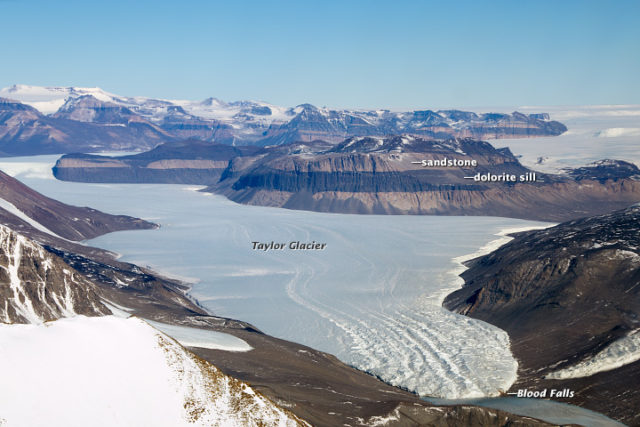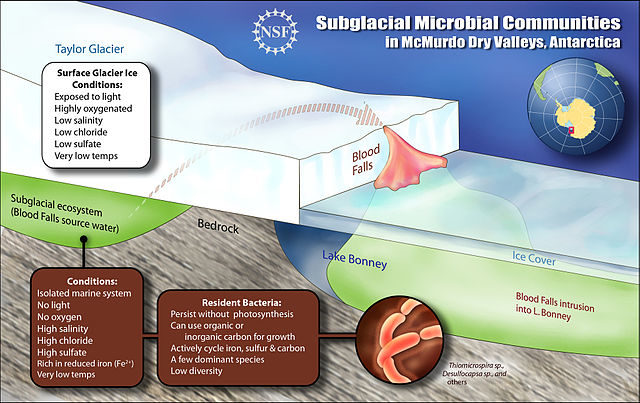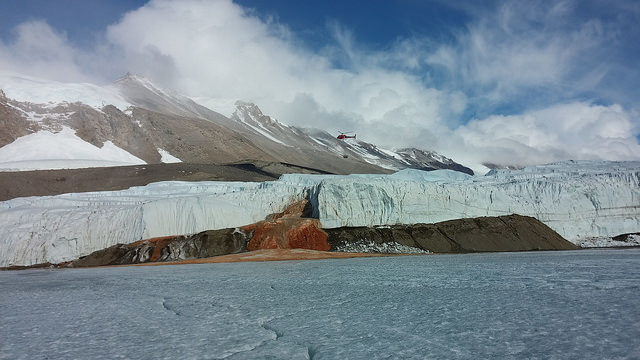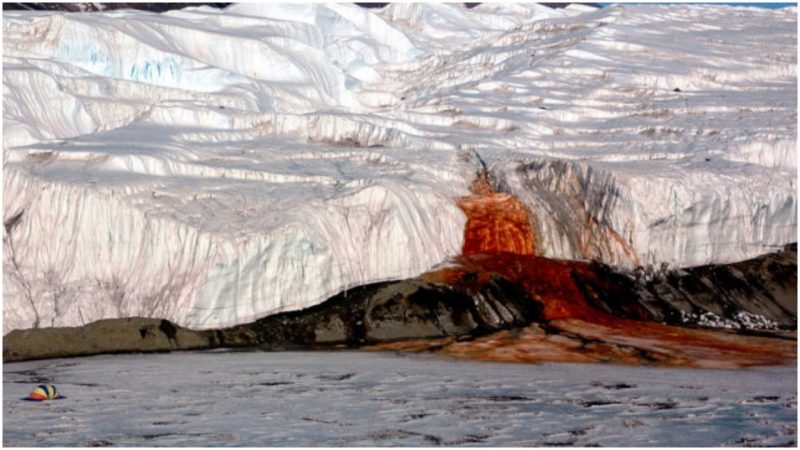Scientists throughout the world have been deeply puzzled for some time as to why the Taylor Glacier in Victoria Land of Eastern Antarctica gives the gruesome impression of what appears to be bleeding.
Named after its discoverer Griffith Taylor, who, during his expedition in 1911, first spotted this peculiar sight, the glacier is spread across the Taylor Valley. From time to time something rather strange occurs: an outflow of reddish water appears at its very end, pouring into West Lake Bonney below.
At first, scientists believed this strange phenomenon to be a direct result of tiny red algae that might be present in the water. However, further expeditions and scientific studies were carried out and water samples obtained from the “Blood Falls”.
Still, with expeditions being rather rare due the location being situated in one of the most remote and geologically exotic places in the world, and the results from them somewhat limited because samples often ended up lost or contaminated, nothing conclusive was reliably proved. That is until, in 2003, one study proved that the redness is due to the high amount of iron oxides, sulfates and salt present in the water.

Furthermore, the saltiness of the water led scientists to a conclusion that there must be free flowing salt water trapped somewhere beneath the huge plate of ice.
And as it turns out, there was. Hidden 400 meters deep beneath the glacier, a subglacial lake of unknown size containing extremely salty water was discovered. Located several kilometers from the outflow, the lake had been completely isolated from the outside world for almost two million years.
A team from the University of Alaska Fairbanks and Colorado College developed a new theory based on the findings and later conclusively proved its existence. They confirmed that not only did the glacier have a lake underneath it but also a free-flowing water system which allows the captive iron-containing liquid seawater to emerge through small cracks in the ice cascade, oxidize instantly and giving the water its bloody color.
The team concluded that somehow, due to an impressive perpetual hydraulic system which sees heat energy released by water freezing which in turn melts the surrounding ice, the water in the lake never really froze. They managed to confirm this using echolocation to track the water flow, kind of like the way bats use it in order to ‘see’ things around them.

At last, during the expedition of US National Science Foundation (NSF) in the Taylor Valley, fresh and uncontaminated samples were taken once again from Blood Falls to enable further studies of the water in the subglacial lake. And the results were simply astonishing.
Chemical and microbial analyses found that a rare subglacial ecosystem of autotrophic bacteria metabolizing sulfate and ferric ions instead of oxygen had developed into 17 different types of microbes, evolving completely independently, isolated from the outside world and any external evolutionary processes. According to geomicrobiologist Jill Mikucki from the University of Tennessee, the lead scientist of the project, such a metabolic process had never before been observed in nature.
Separated for an adequately long enough time, the ancient microbial population evolved in an entirely different way compared to similar marine organisms. This now offers to science one concrete explanation of how other microorganisms endured when the Earth was frozen in its entirety.

Not only that, the uniqueness of this evolutionary process, in a lake serving as a “time capsule” for life to evolve without oxygen for millions and millions of years, is spurring scientists to question the range of conditions in which life can exist. It also gives them a way to study the possibility of life in places such as Mars or Europa, the ice-covered moon of Jupiter, where till now the extremes of the temperatures on these planets excluded that possibility.
The NASA Astrobiology Institute hypothesizes that other planets could contain subglacial liquid water environments such as this. Moreover, they are enthusiastic about the prospect that those environments could be favorable enough for some elementary forms of life to start evolving or be preserved from times when conditions on those worlds were not so extreme. With this discovery, science can now rely on the premise that some forms of life might be better off at extreme depths, completely protected from ultraviolet and cosmic radiation, than exposed on the upper surface, and dig deeper in the search for life that might exist out there in the vastness of the universe.
